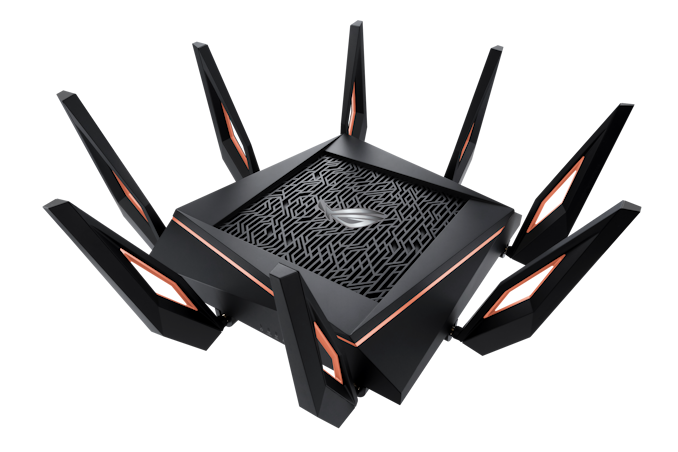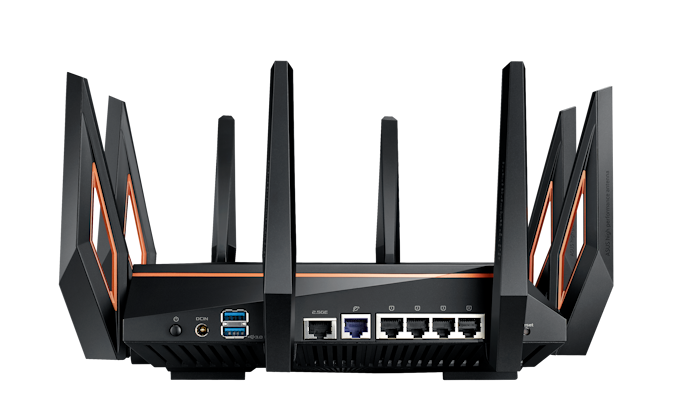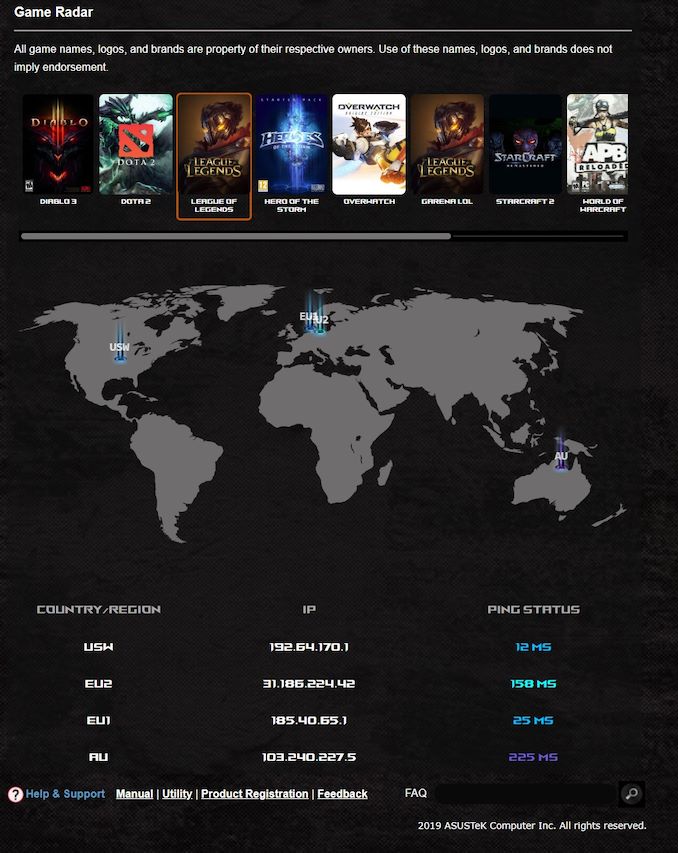AT 101: Wi-Fi 6 And Why You Want It
by Brett Howse on February 12, 2020 8:00 AM ESTThe 2020 AnandTech Wi-Fi Test Bed
We’ve been comfortably using Wi-Fi 5 for some time now, and it is only in the last several months that laptops have been shipping with Wi-Fi 6 based networking, mostly thanks to Intel’s Project Athena which has a requirement of the Intel AX200 Wi-Fi module, which is Intel's first Wi-Fi 6 based module on the market. Previously almost all shipping laptop computers offered Wi-Fi 5, and even a few with the latest Intel wireless adapters such as the Wireless-AC 9260 offered the advanced Wi-Fi 5 options such as 160 Mhz channel width, and MU-MIMO, so its nice to see a move to a new standard which includes these benefits across the board.
Although there are now quite a few Wi-Fi 6 routers and access points on the market, we had some specific criteria to meet. The router had to support Wi-Fi 6, and the 160 MHz channels, but because we are testing for performance, and not for capacity, we need an access point with a multi-Gigabit Ethernet connection. A typical laptop with a 2x2:2 network connection will be connecting to the access point at 2.4 Gbps, so transferring files from Ethernet over Gigabit will be a bottleneck. This does limit the selection somewhat.
After evaluating several models, we decided on the ASUS ROG Rapture GT-AX11000. The name is a mouthful, but meets all of our criteria and more. Most importantly, it offers the coveted 2.5 GbE port.
The ASUS ROG Rapture GT-AX11000
As the name implies, this router from ASUS can support up to 11000 Mbps over wireless, thanks to the 4x4 2.4 GHz, offering 1148 Mbps, and the two 4x4 5 GHz networks each offering 4804 Mbps. This adds up to just under 11000 Mbps, although with wireless the maximum connection speed is pretty much impossible to achieve. With the two separate 5 GHz networks, you can easily split off your consumption devices with higher priority devices, reducing interference on each network.
On the Wide Area Network (WAN) side there is a single 1 Gbps connection, and on the Local Area Network (LAN) side there are four 1 GbE and the single 2.5 GbE connection.
This router is built for capacity, with eight external antennae, and being a gaming router it also offers plenty of RGB lighting options. For those that don’t need the lighting, it can be turned off. ASUS also some tools to change the priority of gaming packets to reduce latency, assuming your network is that busy, and specifically prioritizes traffic from other ROG devices to make setup as easy as possible. ASUS even includes a utility to ping the various game servers for popular multiplayer games to provide you a map of latency to each one.
The GT-AX11000 also integrates with the ASUS AiMesh networking equipment to provide a whole-home mesh network, if even a router of this size can’t cover the entire house, either due to size or building materials blocking the signal.
For testing, the router is used in the access point mode, with the LAN connecting being over the 1 Gbps Ethernet, and a server connected directly to the router in the 2.5 Gbps port.













149 Comments
View All Comments
levizx - Wednesday, February 12, 2020 - link
Because affordable 1Gbps connection isn't a thing for even 90% of high-end buyers yet, let alone > 1GbpsMakaveli - Wednesday, February 12, 2020 - link
If you are in the US then yes internet is terrible in america.Fortunately for me I live in Canada and on a 1Gbps Fiber connection.
triphoppingman - Wednesday, February 12, 2020 - link
This article from 2016 actually says Canadia is barely faster than Mexico.https://www.forbes.com/sites/kevinmurnane/2016/09/...
Wikipedia agrees:
https://en.wikipedia.org/wiki/List_of_countries_by...
Makaveli - Wednesday, February 12, 2020 - link
lol you believe a Wiki Article then.Unless you live in chattanooga or have access to AT&T fiber or google fiber or fios you are pretty much stuck with Cable/dsl for options which are data capped.
Most of our major ISP's in Canada got rid of data caps years ago.
Trust me when I tell you Canadian internet is generally better than what you can get in the US.
imaheadcase - Wednesday, February 12, 2020 - link
Thats pretty subjective though considering Canada population is mostly in one area vs the US.Makaveli - Wednesday, February 12, 2020 - link
Subjective or not its the truth.not trying to get in a population density argument like the Europeans that come in trying to do the same thing lol.
nathanddrews - Wednesday, February 12, 2020 - link
That's the problem with relying on aggregated national data rather than per-market pricing. I can get 1Gbps fiber for $130/mo in my suburb, but 10 miles north of me the only option is dial-up (cheap/slow) or satellite (expensive/slow). 10 miles west of me, there's a smaller fiber ISP offering 2.5Gbps for $150/mo that I can't get. It's not rocket science, just infrastructure and economics.Flipper34 - Wednesday, February 12, 2020 - link
Even out here in the rural midwest we have fiber to the home available. It isn't inexpensive for the higher speeds, but it is available. Our connection was upgraded to fiber at no cost, but we are on a low speed cheap plan! :)Ratman6161 - Wednesday, February 12, 2020 - link
where in the midwest are you? That is certainly not true in Minnesota. I'm about 40 miles from Minneapolis and 200 Mbps is the best I can get. For family about 10 miles out of St Cloud, 40 is the best they can get. further out it goes down from there. Likewise with cellular. the carriers are hyping 5g when there are vast areas in the northern half of MN and WI that cant even get reliable 4G and when the can its only one carrier to choose from.pjcamp - Wednesday, February 12, 2020 - link
For anything not controversial, Wikipedia articles are pretty accurate. I'm a physicist and I'm thoroughly impressed by the physics articles.